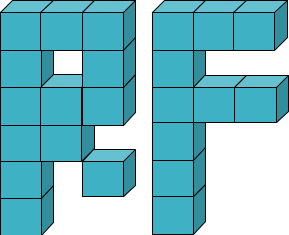reservoirflow.grids.RegularCartesian.show#
- RegularCartesian.show(label: str = None, boundary: bool = False, corners: bool = False, ruler: bool = False, desc: bool = False, title: str = None, cmap: str = 'Blues', gamma: float = 0.7, n_colors: int = 10, opacity: float = 0.9, azimuth: float = 45, elevation: float = 40, zoom: float = 1, static: bool = False, notebook: bool = False, window_size: tuple = None, **kwargs)#
Shows pyvista grid.
This function shows the grid using pyvista object in 3D. Only if the total number of cells is lower than 20, then the grid will be transparent. Therefore, to be able debug your model, try to first test a small model.
- Parameters:
prop (str, optional) – property to be visualized (do not use. still not active).
label (str, optional) – label of grid centers as str in [‘id’, ‘coords’, ‘icoords’, ‘dx’, ‘dy’, ‘dz’, ‘Ax’, ‘Ay’, ‘Az’, ‘V’, ‘center’, ‘sphere’]. If None or False, nothing will be added as a label.
boundary (bool, optional) – include boundary cells.
corners (bool, optional) – include cells corners with ijk values..
ruler (bool, optional) – show ruler grid lines.
info (bool, optional) – show grid information (do not use. still not active).
cbar (bool, optional) – show color bar (do not use. still not active).
title (str, optional) – title shown at top-center of the Graph. If None, ReservoirFlow is shown.
cmap (str, optional) – color map name based on Matplotlib, see Choosing Colormaps in Matplotlib.
gamma (float, optional) – shift color map distribution to left when values less than 1 and to right when values larger than 1. In case of qualitative colormaps, this argument is ignored.
n_colors (int, optional) – number of colors. In case of qualitative colormaps, n_colors should not exceed the total number of available colors (e.g. 10 for cmap=”tab10” and 20 for cmap=”tab20”).
opacity (float, optional) – adjust transparency between 0 and 1 where 0 is fully transparent and 1 is fully nontransparent.
azimuth (float, optional) – adjust camera azimuth which is a horizontal rotation around the central focal point, see pyvista.Camera.
elevation (float, optional) –
adjust camera elevation which is a vertical rotation around the central focal point, see pyvista.Camera.
zoom (float, optional) – adjust camera zoom which is direct zooming into the central focal point. see pyvista.Camera.zoom.
static (bool, optional) – show as a static image in a jupyter notebook. This argument is ignored when notebook argument is set to False. True value is used to render images for the documentation.
notebook (bool, optional) – show plot is placed inline a jupyter notebook. If False, then an interactive window will be opened outside of jupyter notebook.
window_size (tuple, optional) – pyvista plotter window size in pixels.
**kwargs – you can pass any argument for pyvista Plotter except if it is defined as argument in this function (e.g. window_size), see pyvista.Plotter <https://docs.pyvista.org/version/stable/api/plotting/_autosummary/pyvista.Plotter.html>
- Raises:
ValueError – label is not recognized.
